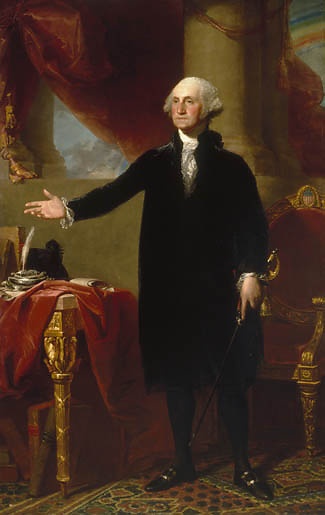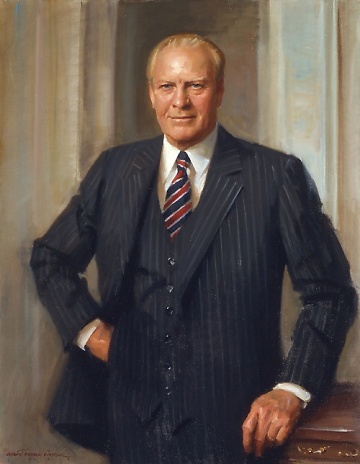A Reply To The Wall Street Journal
Presidential Portraiture Today — Moving Beyond
Gilbert Stuart
George Washington
(The Lansdowne Portrait), 1796
By Gilbert Stuart.
Oil on canvas,
97½ x 62½ inches.
National Portrait Gallery,
Smithsonian Institution,
Washington, D.C.
|
 |
The
portrait of President
Gerald Ford by Everett
Raymond Kinstler, which
Leigh considers "bland"
is, in fact, ten times more evocative
of a living, breathing human being
than is the theatrical, artificial
and contrived Washington by Gilbert
Stuart. |
|
|
President Gerald R. Ford
By Everett Raymond Kinstler.
Oil on canvas.
National Portrait Gallery,
Smithsonian Institution,
Washington, D.C. |
 |

JOHN HOWARD SANDEN
New York
Click
here to read the original Wall Street
Journal article.
|